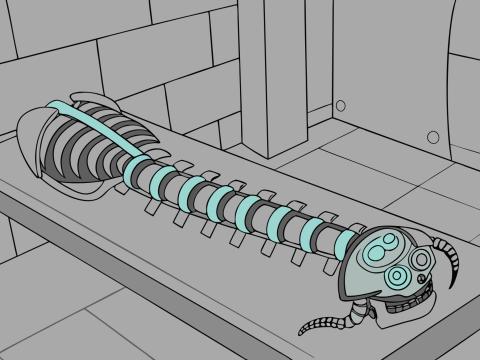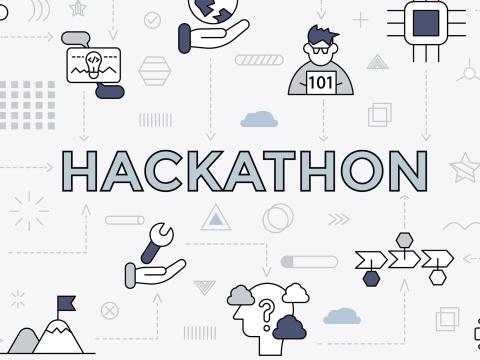Valley of Death, A Call to Action
This is a call to action for the federal government to step up to the challenge and transform itself to remain relevant in the digital age. To effect this transformation, government leaders must think and act differently while remaining laser-focused on developing and sustaining a trained and ready workforce to meet the government’s core requirements and responsibilities. Doing so necessitates partnering with industry service providers that can free the organic workforce to engage in unique government tasks.
The so-called “Valley of Death” is a prime example of how the government fails to adopt new technology and approaches to become more innovative, agile and effective. Numerous solutions wither and die before making the transition from being a viable product to becoming a realized tool in the hands of the warfighter. The trek to success can be derailed in myriad ways:
- Siloed teams fail to make handoffs. With work happening across separate systems and programs with different processes and operating procedures, coordination is limited and difficult and invites confusion.
- The unique needs of the U.S. military prove too elusive. Defense and intelligence agencies (and indeed all federal agencies) have strict governance standards and arduous acquisition processes and must execute against use cases not often found in the private sector.
- A lack of a common operating picture strains executive decision-making. It takes considerable time and effort to track progress, drive accountability and get alignment.
Military organizations, federal agencies and those working with them can accelerate their go-to-market timeline—and improve their success rate in crossing the Valley of Death—by adopting tools at the enterprise level that foster a more collaborative culture and mindset in day-to-day work. By using a collaborative work management (CWM) platform to manage information technology (IT) programs and processes across an agency—and even between agencies, and between government agencies and partnering institutions, vendors and academia—you can place the right information with the right person at the right time, with the overarching aim to make better informed and more timely decisions.
Tools available right now are practically tailor-made for solving the Valley of Death. With the right CWM platform, you can assign tasks, track budgets and enforce deadlines to meet goals on time, in scope and at cost. Frictionless and secure sharing can eliminate silos. Flexible and easy-to-navigate capabilities allow users to build custom solutions that can gather requirements rapidly, meet unique agency needs and adapt to Byzantine acquisition processes. And real-time visibility allows leaders to see where transition efforts stand—and when they need to step in—with a consistent, single source of truth.
The inherent value of this approach goes well beyond the Valley of Death. The world in which the military operates is changing dramatically. Technological advances are driving changes that are outpacing the military’s ability to organize and adapt, and the pace of these advancements is accelerating. Here’s the salient point: defense and intelligence leaders—indeed government leaders of all stripes—need to make some foundational changes to the way their organizations do business and, because incremental change will not be enough, must fundamentally transform the way the federal government works. The work processes and workflows of the past are very different from those required in the future.
The challenges facing the armed forces and civilian agencies no longer reside within a single workstream or organization. Work today necessitates coalitions that operate fluidly across functional and organizational boundaries. Technology exists and is readily available to make transformational change and enterprise-wide efficiencies possible. Cultural norms and behaviors, however, must first be overcome if leaders are to succeed in ridding the government of outdated business practices and workflows.
I’m not suggesting tweaking at the edges. Government leaders must radically transform a mindset built on a litany of decades-old policies, processes and business practices to prepare their workforces to remain relevant in a completely different world. This means undertaking the necessary cultural shift in three distinct ways:
- Increasing focus on outcomes instead of the process used to achieve them
- Managing organizational data as a strategic asset
- Taking measured steps to manage IT services and investments at an enterprise level
“Transformation” might seem too big a leap, but this is the formal leader’s responsibility and with the right focus and attention, government employees will understand the reason for change and, more importantly, develop new and better approaches to getting their jobs done.
Instead of retrofitting ill-fitting IT tools to accomplish work processes in “the way it’s always been done,” agencies can leverage commercial solutions to deliver outcomes untethered to practices and procedures of the past to save money, deliver at the speed of relevance and free government workers to focus on getting the results needed to ensure their success. Leaders must be strong advocates for a better-trained and properly equipped workforce. Equally important, however, is to make needed changes to current policies, procedures and directives so the workforce can fully leverage advancements related to cloud and automation in their collective efforts to move aggressively away from traditional information technology tools and business processes.
You may be asking: “Why is this important?” Simply put, the Valley of Death is not only a barrier to productivity but a litmus test as to whether the U.S. government is capable of reaching its full potential. A CWM platform would unlock that potential and allow users to organize and operationalize “unstructured work”—the numerous email threads, spreadsheets, efforts and interactions that make up day-to-day tasks—faster, securely and at scale. CWM tools empower individuals and teams to build and customize processes, eliminate manual tasks with automation capabilities, collaborate in real time and keep leadership informed with insights and performance metrics. Providing federal agencies with a solution that can align daily workforce tasks with strategic goals, remove barriers to collaboration and scale solutions across a unified platform will drive greater agility and efficiency of the workforce, leading to better outcomes. Crossing the Valley of Death becomes just one more project to manage. A team or agency using a CWM platform to its full potential should be operating on all cylinders, with informed leadership, an agile workforce acting in sync and clear, strategic goals and responsibilities. In short: “mission ready.”
In today’s high-paced and rapidly evolving information environment, having the right information at the right place and time is critical to derive strategic advantages in a competitive and interconnected world. Ultimately, CWM will result in greater knowledge about the options and opportunities available, an increase in both the capability and capacity to make better informed and more accurate decisions and better management of contemplated actions and potential consequences, impacts and results. Bringing strategy, teams and information together will help agency leaders align tactical execution with enterprise strategy.
If government leaders are to transform their organizations, a final focus area must center on the need to manage the transformation efforts at the enterprise level. Simply put, enterprise IT is an enabler rather than a cost to be minimized. Enterprise management allows for increased speed of delivery, reduced total costs, improved transparency and enhanced security. Huge efficiencies are possible and ready to be realized.
The president and Congress have made it clear that the government needs to become lean and efficient, and they’ve granted a wide range of authorities to help cross the Valley of Death through the adoption of new technologies and approaches. The President’s Management Agenda envisions a future that strengthens and empowers the workforce with tools emphasizing seamless collaboration and transparency across teams. Congress calls for work that can be done anywhere at any time and brings people together from across government to enable innovation and speed. The value of these initiatives is not only self-evident but also creates a culture that will attract high performers when attrition is on the rise and a retirement wave is on the horizon.
The environment is dynamic, and advancing technologies have completely outpaced government policies, processes and business practices developed decades ago. Without question, they served the U.S. government well in a different time, but as difficult and arduous as it currently is to get new technology through the Valley of Death, that is no longer the case. Government leaders must innovate to survive and thrive in today’s information-driven world. They also must adopt modern project and work management tools and solutions that enable new ways to inform decisions, connect execution to strategy and create measurable impact.
The long-standing adage “do more with less” is no longer practicable; there are simply too many tasks and not enough resources to keep up with today’s relentlessly increasing pace. Leaders must create an environment where innovation can happen by empowering teams to work in harmony toward a shared purpose—a place where teams can consistently deliver results faster, securely and at scale. It’s time to step up to the challenge of transforming government to remain relevant in the digital age.
Lt. Gen. Bill Bender, USAF (Ret.), is the senior vice president for strategic accounts and government relations at Leidos, and chair of the board for AFCEA International. He has previously served as the Air Force chief information officer.
The opinions expressed in this article are not to be construed as official or reflecting the views of AFCEA International





Comments